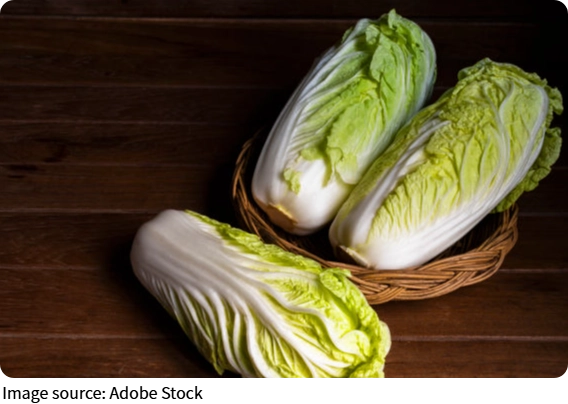Cabbage vs Greens

When we stroll through the vegetable aisle, we see a beautiful variety of leafy greens—cabbage, spinach, kale, lettuce, Swiss chard, and more. Each looks fresh and inviting, but how do they really compare when it comes to nutrition?
Today, let's take a closer look at cabbage, a kitchen staple, and see how it stacks up against other leafy greens. You might be surprised at what we discover!
The Nutritional Strength of Cabbage
Cabbage is a humble vegetable that often flies under the radar, but it packs a punch when it comes to health benefits. It is rich in vitamin C, vitamin K, and fiber. One cup of chopped cabbage provides about 22 calories, making it a low-calorie yet nutrient-dense food.
Cabbage also contains antioxidants such as polyphenols and sulfur compounds that support immune health and may help reduce inflammation.
How Does Cabbage Compare to Spinach?
Spinach is often labeled a "superfood"—and for good reason. It's incredibly rich in iron, folate, magnesium, and vitamin A. Compared to cabbage, spinach has significantly more iron and folate, which support energy metabolism and red blood cell production.
However, cabbage offers more vitamin C than spinach, which helps us maintain a healthy immune system and supports skin health. Additionally, cabbage is less prone to causing oxalate buildup, which may be a concern for individuals prone to kidney stones from consuming too much spinach.
Kale vs Cabbage: The Nutrient Showdown
Kale is another trendy leafy green known for its dense nutrition. It provides impressive amounts of vitamin A (in the form of beta-carotene), vitamin C, and calcium. Kale surpasses cabbage in these vitamins and is especially well-regarded for skeletal support and eye health.
On the flip side, cabbage is gentler on digestion and more versatile in cooking. It's also an affordable and accessible option for everyday meals.
Lettuce vs Cabbage: Which Is More Nutritious?
We often eat lettuce in salads for its refreshing crunch, but in terms of nutrients, cabbage easily outshines it. While lettuce, especially iceberg, offers hydration and fiber, it is relatively low in vitamins and minerals.
Cabbage, whether raw or cooked, delivers more vitamin C, vitamin K, and phytonutrients. If we're looking to boost our nutritional intake, cabbage is definitely a smarter choice than lettuce.
Swiss Chard and Cabbage: A Balanced Comparison
Swiss chard is another leafy green that competes well with cabbage. It contains significant amounts of vitamins A, C, and K, along with magnesium and potassium—minerals that support heart and muscle function.
Cabbage holds its own with its antioxidant content and fiber. In terms of versatility, cabbage can be used raw, fermented (think sauerkraut), steamed, or stir-fried, while Swiss chard is often best enjoyed cooked to soften its texture.

Expert Insights on Leafy Greens
Nutrition experts emphasize the importance of eating a variety of leafy greens rather than focusing on just one.
According to Dr. Walter Willett, professor of nutrition at Harvard T.H. Chan School of Public Health, "Leafy greens provide a spectrum of nutrients that support overall health. Rotating between different types of greens can help us cover nutritional gaps and avoid overconsumption of any one component."
Studies published in the Journal of the Academy of Nutrition and Dietetics also suggest that including a mix of greens like cabbage, kale, and spinach in our diet can promote better gut health and may reduce the risk of chronic illnesses.
How We Can Enjoy Cabbage and Other Greens
The beauty of leafy greens lies in their versatility. We can enjoy cabbage raw in salads or slaws, lightly sautéed with garlic, or fermented for gut-friendly dishes. Spinach works well in smoothies, soups, and pasta. Kale can be baked into crispy chips or added to grain bowls. Swiss chard brightens stir-fries and pairs beautifully with legumes.
By mixing different greens in our meals, we make our plates more colorful and our nutrition more well-rounded.
Let's Celebrate the Power of Greens!
So Lykkers, which leafy green do you reach for the most? After today's deep dive, we see that cabbage holds its own proudly among its leafy cousins. Each green brings unique benefits to our table, so why not embrace variety?
Next time we shop or cook, let's remember to mix it up—our bodies will thank us. And if you have a favorite cabbage recipe, share it with us. We're always eager to learn new delicious ways to enjoy these leafy wonders!

 · Food Team
· Food Team